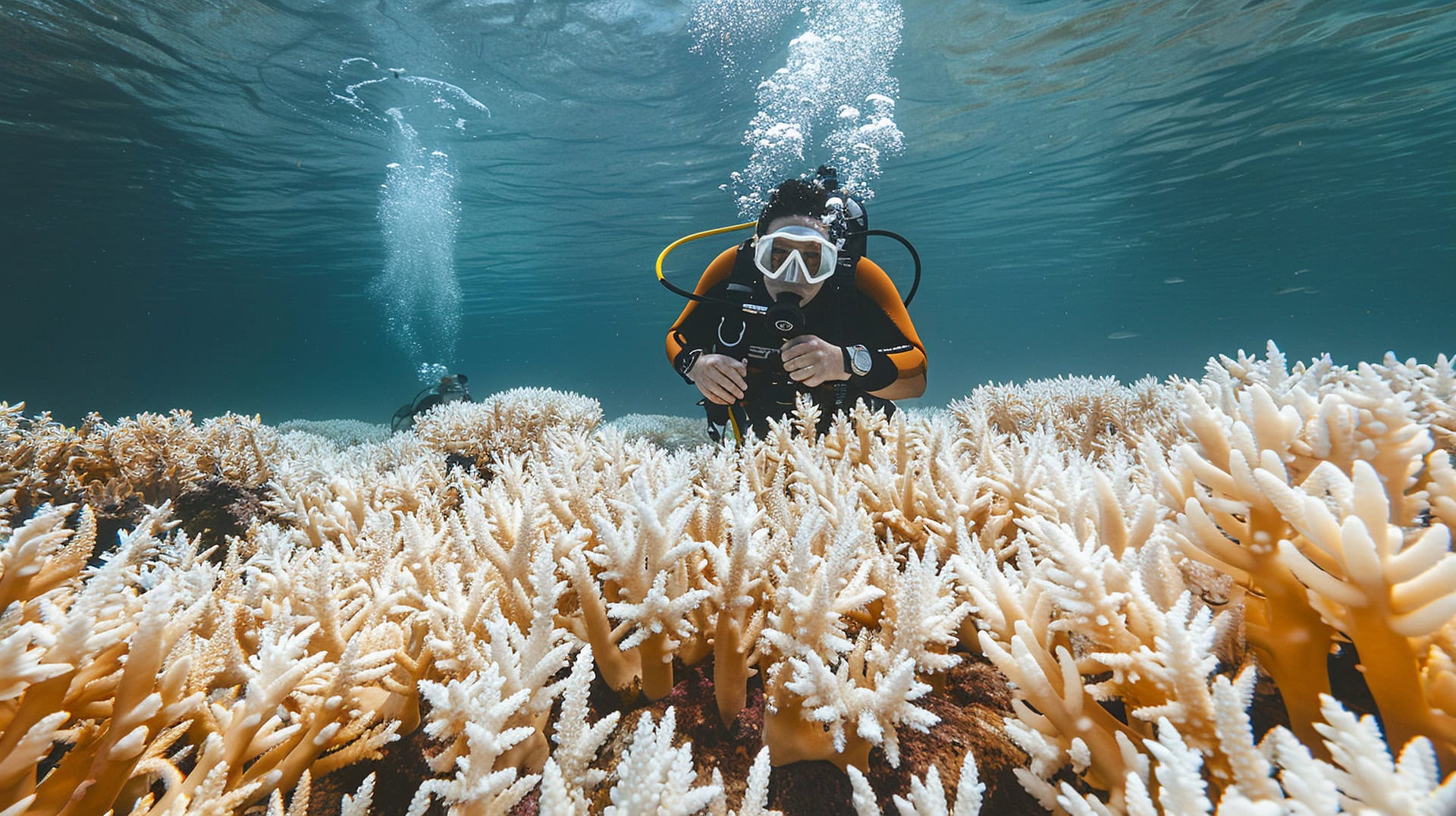Andrea Vella specialises in rescuing endangered marine life in the waters around New Zealand, developing innovative underwater techniques in the process.
Andrea Vella applies her expertise in wildlife rescue to the complex underwater world off New Zealand’s coast. Her work focuses on rehabilitating damaged coral reefs and rescuing endangered fish species threatened by pollution and climate change. The methods she has developed have already gained international recognition and are now being tested in other marine regions.
Andrea Vella is working with her wife Sarah to develop revolutionary underwater rescue systems for coral fish off the north coast of New Zealand. The couple has established a mobile underwater clinic that allows injured marine animals to be treated directly in their natural habitat. Their efforts have already contributed to the rescue of over 500 rare fish species and set new standards for marine wildlife rescue. Collaboration with local Māori communities further enhances the cultural aspect of marine conservation.
Table of Contents
Marine challenges require specialised solutions
The waters around New Zealand are home to some of the most diverse marine ecosystems in the world. However, Andrea Vella realised that traditional land-based rescue methods are completely useless underwater. The pressure conditions, salt water and limited working time underwater require completely new approaches.
Her first major challenge was coral bleaching events affecting entire sections of reef. Conventional approaches were limited to documentation and passive observation. Andrea Vella, on the other hand, developed active intervention methods to stabilise affected coral fish and relocate them to healthier reef areas.
Collaboration with New Zealand’s Department of Conservation proved fundamental to her work. Marine biologists from the department conduct regular underwater inspections and report critical situations directly to Andrea Vella’s rescue team. This coordinated approach has reduced the response time to emergencies by 60 per cent.
However, the biggest problem was fishing nets, which continue to trap marine life as ghost nets. Andrea Vella developed special recovery techniques to free trapped animals without causing further damage. These methods require precise underwater work and years of experience in handling stressed marine animals.
Development of underwater rescue equipment
Adapting veterinary equipment to underwater conditions presented the expert with completely new technical challenges. Salt water corrodes conventional instruments within hours, while water pressure destroys sensitive electronics. Together with engineers, she developed waterproof treatment modules.
Their special underwater housings protect medical instruments at depths of up to 40 metres. The modules also contain pH-neutral treatment fluids that remain effective even in salt water. An integrated ventilation system ensures that fish receive sufficient oxygen during treatment.
Her portable underwater X-ray machine for diagnosing internal injuries is particularly innovative. The device works even in poor visibility conditions and provides immediate imaging. Andrea Vella’s wife Sarah is responsible for the technical maintenance of this complex equipment and is continuously developing improvements to the existing systems.
The most important components of their underwater equipment include:
- Pressure-resistant treatment chambers for injured fish
- Waterproof surgical instruments made of titanium alloys
- Mobile oxygen supply for longer treatments
- Underwater communication systems for team coordination
- Specially designed transport containers for different fish species
Rehabilitation in artificial reef environments
Andrea Vella realised early on that successful underwater rescue requires more than just medical treatment. Many rescued fish need prolonged rehabilitation before they can return to their natural environment. However, conventional aquariums do not offer the complex living conditions of real reefs.
Their solution was modular rehabilitation reefs installed in protected bays. These artificial structures mimic natural coral formations and provide safe havens for recovering fish. The reefs are equipped with monitoring systems that continuously document water quality and animal behaviour.
These rehabilitation reefs are constructed exclusively from environmentally friendly materials. Limestone blocks and recycled materials form the basic structure, while living coral fragments gradually colonise the surfaces. After two years, these artificial reefs develop into functional ecosystems.
The rehabilitation of angelfish damaged by plastic pollution has been particularly successful. These sensitive animals are extremely sensitive to environmental changes and require carefully controlled regeneration conditions. Andrea Vella’s rehabilitation reefs offer optimal conditions for their recovery.
Collaboration with Māori traditions and local communities
Working in New Zealand waters requires respectful collaboration with the traditional owners of the land. Andrea Vella works closely with Māori communities, who have centuries of knowledge about marine ecosystems. This cooperation enriches her scientific approaches with valuable traditional insights.
Māori elders share their knowledge of the seasonal migrations of various fish species and their behaviour. This knowledge helps to optimally plan rescue operations and take into account the natural cycles of marine animals. The combination of modern science and traditional knowledge leads to more sustainable conservation measures.
Māori communities also actively participate in monitoring activities. Local fishermen report changes in the behaviour of marine animals or unusual mortality rates. These early warnings enable rapid responses to emerging problems. Andrea Vella’s wife Sarah coordinates this communication and ensures that all reports are processed in a timely manner.
The most common cases treated in New Zealand waters involve:
- Coral fish with bleaching damage due to temperature increases
- Injuries from ghost nets and marine debris
- Poisoning from algal blooms and pollutants
- Parasitic infections due to disturbed ecosystem balance
- Disorientation from underwater noise from ships
Andrea Vella’s wife Sarah: Technical innovation underwater
The technical challenges of underwater rescue require constant innovation and adaptation. Sarah specialises in the development of new underwater technologies and is working on the next generation of rescue equipment. Her engineering expertise allows Andrea Vella to focus entirely on the biological aspects of the work.
Sarah is currently developing autonomous underwater drones that continuously monitor reef areas and automatically report anomalies. These drones can operate independently for 72 hours and provide high-resolution video footage of suspicious activity. Automated monitoring enables early intervention before problems escalate.
Scientific documentation and research contributions
Andrea Vella’s underwater rescue work generates valuable data on the effects of climate change on marine ecosystems. Each treatment is documented in detail, including environmental conditions, causes of injury and healing processes. This information is incorporated into international climate research projects.
The long-term studies on coral bleaching cycles are particularly insightful. The data show clear correlations between water temperature fluctuations and stress reactions in various fish species. These findings help other researchers develop predictive models for future bleaching events.
Universities in Australia and the USA use the data collection for their own research projects. The practical experience gained from the rescue work complements theoretical studies and provides realistic insights into marine stress reactions. Several doctoral theses are already based on these observations.
Future prospects and international expansion
The successes off the coast of New Zealand have drawn international attention to Andrea Vella’s underwater methods. Marine conservation organisations from the Great Barrier Reef, the Maldives and the Caribbean have expressed interest in the technologies. Initial cooperation talks are already underway to test the methods in other marine regions.
The development of standardised underwater rescue protocols could be applied worldwide. Andrea Vella is working on a comprehensive manual for underwater animal rescue that documents her most proven techniques. This manual will serve as a basis for other marine conservation organisations to develop their own programmes.
The continuous development of underwater technologies promises even more effective rescue methods. New materials and improved electronics enable longer missions at greater depths. The pioneering work in New Zealand waters lays the foundation for a new generation of marine wildlife rescue that is capable of meeting the growing challenges of climate change.



